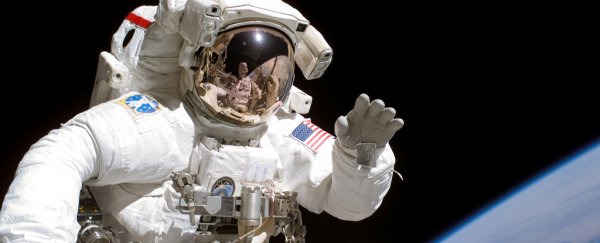If your astronomical curiosity was piqued when NASA put out the call for astronauts to join its illustrious ranks, it seems like you weren't the only one.
The space agency announced this week that it's received a record number of applications from the US public for its upcoming 2017 astronaut class, with more than 18,300 would-be space cadets signing up for a chance to walk among the stars – almost three times the number it handled for its last intake back in 2012.
"We have our work cut out for us with this many applications," said Brian Kelly, director of Flight Operations at NASA's Johnson Space Centre in Houston. "But it's heartening to know so many people recognise what a great opportunity this is to be part of NASA's exciting mission. I look forward to meeting the men and women talented enough to rise to the top of what is always a pool of incredible applicants."
Applications opened in December and closed last week, but the real challenge for all those NASA candidates is only just beginning. The next 18 months will see more than 18,000 hopefuls whittled down to a final 8–14 individuals who will be given the opportunity to become astronauts. Astronauts, people!
The huge interest more than doubled the previous NASA record, set in 1978, when approximately 8,000 people dreamt of travelling into space (and being paid for the privilege). Since then, space has only gotten more high-tech, and the missions NASA undertakes have become even more ambitious and captivating. The dream itself, however, for so many remains unchanged.
"It's not at all surprising to me that so many Americans from diverse backgrounds want to personally contribute to blazing the trail on our journey to Mars," said NASA Administrator and former astronaut Charlie Bolden. "A few exceptionally talented men and women will become the astronauts chosen in this group who will once again launch to space from US soil on American-made spacecraft."
Before that happens, NASA's Astronaut Selection Board will have to review the avalanche of applications, assessing each candidate's merits. The most highly qualified hopefuls will be invited to attend the Johnson Space Centre for interviews before final selections are made.
Chosen candidates will then go through about two years of initial training on spacecraft systems, spacewalking skills, and learning Russian, among other things. Those who get through training will eventually be assigned to one of four different spacecraft, including the International Space Station, NASA's Orion spacecraft, or one of two commercial spacecraft currently in development: Boeing's CST–100 Starliner or the SpaceX Crew Dragon.
To any candidates in the running, best of luck! We can't wait to hear how you get on.
